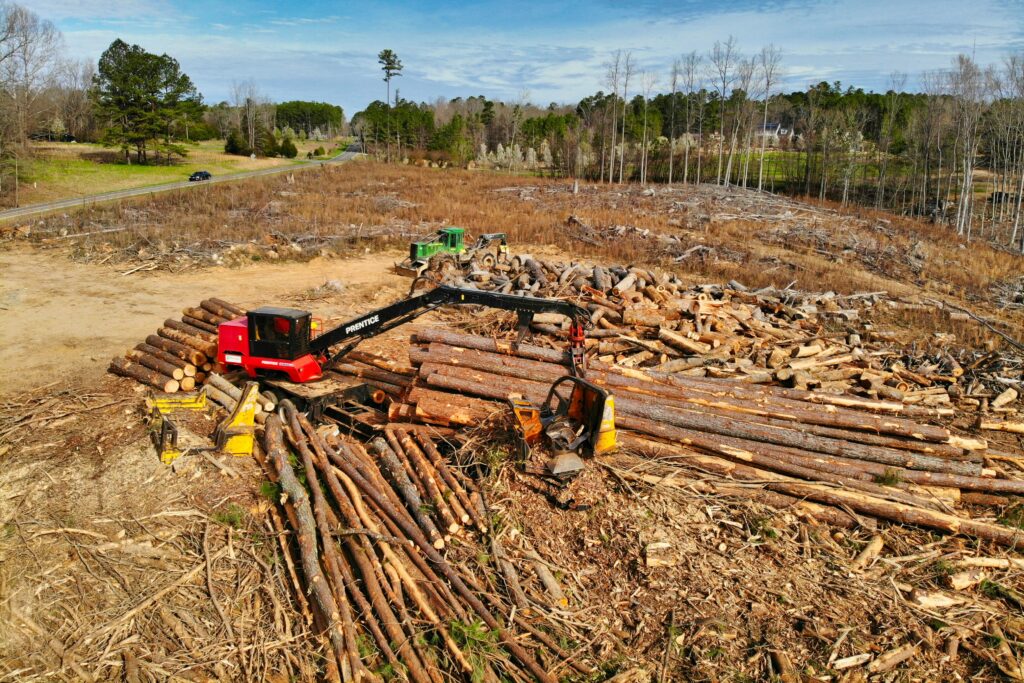The EU Deforestation Regulation (EUDR) is a new legal framework introduced by the European Union to combat global deforestation and forest degradation. Its main goal is to ensure that certain commodities placed on or exported from the EU market are deforestation-free, legally produced, and traceable to their source.
This article explains the meaning, purpose, and legal requirements of EUDR, including its impact on supply chains, implementation steps, and the role of technology in ensuring compliance. It is designed for professionals, clients, and decision-makers who want a clear understanding of the regulation and how to prepare for it.

What Is EUDR and Why It Matters
This section outlines the definition of EUDR and explains why the regulation was created. It sets the foundation for understanding its broader legal and environmental context.
What Is the EU Deforestation Regulation (EUDR)?
EUDR stands for the European Union Deforestation Regulation, officially adopted as Regulation (EU) 2023/1115. It came into force in June 2023 and establishes strict rules for placing or exporting certain commodities in the EU. Products must be deforestation-free, legally produced, and traceable to their origin through detailed documentation.
EUDR replaces the previous EU Timber Regulation (EUTR) and expands the scope beyond illegal logging to address all forms of deforestation whether legal or not under local laws.
Why the EUDR Was Introduced
The regulation addresses critical global issues such as climate change, biodiversity loss, and forest degradation. The EU is one of the world’s largest importers of agricultural and forestry products, which means its consumption patterns significantly influence global deforestation.
Forests play a vital role in storing carbon, supporting biodiversity, and providing livelihoods. Yet demand for commodities like soy, palm oil, and cattle has accelerated deforestation, especially in tropical regions. EUDR aims to reduce the EU’s ecological footprint and promote sustainable trade practices. It also reinforces the EU’s commitments under the European Green Deal and the goal of climate neutrality by 2050.
EUDR vs. EUTR: What Has Changed
To fully understand the significance of the new regulation, it’s useful to compare EUDR with its predecessor. The EU Timber Regulation (EUTR), in force since 2013, was the first step in addressing forest-related risks in supply chains. However, its scope and mechanisms were limited.
While the EUTR focused exclusively on timber and aimed to prevent illegal logging, it did not address legal deforestation, excluded non-wood commodities like soy or cattle, and lacked robust traceability and enforcement systems.
The EUDR replaces and expands upon EUTR by:
- Covering seven high-risk commodities beyond timber (e.g., soy, palm oil, cocoa).
- Applying to both legal and illegal deforestation.
- Requiring full traceability to the plot level using geolocation data.
- Mandating a structured due diligence process and submission of compliance declarations.
- Introducing risk classification of countries and stricter enforcement measures.
In short, the EUDR sets a broader, stricter, and more technologically advanced compliance framework. Companies that previously followed EUTR requirements must now adapt to more complex and rigorous standards.
Scope of EUDR: What It Covers and Who Must Comply
Understanding the scope of EUDR is essential for determining whether a product or business falls under its requirements. This section explains which goods are covered and which actors are legally responsible for ensuring compliance with the regulation.
Affected Commodities and Products
The EUDR specifically targets commodities with the highest links to deforestation and environmental degradation. These goods and their derivatives are central to global supply chains and must meet strict sustainability criteria when entering or exiting the EU market.
EUDR applies to seven high-risk commodities commonly linked to deforestation:
- Cattle.
- Cocoa.
- Coffee.
- Palm oil.
- Soy.
- Wood.
- Rubber.
It also applies to a wide range of derived products such as leather, chocolate, paper, pulp, furniture, and printed books. Products are included based on their classification under the EU’s Combined Nomenclature (CN) system.
The regulation only applies to goods produced on or after 29 June 2023. Special rules apply to timber: products harvested before that date are covered by the old EUTR until 30 December 2028. After this, all timber-related goods must meet EUDR standards. For cattle, the key date is the animal’s birth.
Who Needs to Comply
The EUDR assigns legal responsibility to specific actors within the supply chain. Understanding whether your company is classified as an operator or a trader is critical, as it defines the level of due diligence and reporting you are required to perform.
The regulation distinguishes between:
- Operators: Entities that place regulated products on the EU market for the first time, or export them outside the EU. This includes importers, EU manufacturers sourcing raw materials, and even large retailers who directly procure affected commodities.
- Traders: Companies that sell products already placed on the EU market, without modifying them. This includes wholesalers, distributors, resellers, and online platforms.
Operators carry the primary legal responsibility for ensuring that products meet EUDR requirements. They must conduct full due diligence, assess risks, and submit compliance statements before the products are placed on or exported from the EU market.
Traders, while subject to lighter obligations, must retain relevant information to demonstrate traceability. Larger traders (non-SMEs) may also face additional requirements.
Examples of who must comply include:
- An EU-based chocolate manufacturer importing cocoa from West Africa (operator).
- A furniture retailer sourcing wooden chairs from Indonesia (operator).
- A supermarket chain selling packaged coffee from a branded supplier (trader).
- An e-commerce marketplace offering palm oil-based cosmetics from non-EU sellers (trader with due diligence duties depending on size).
Compliance deadlines vary by company size:
- Large companies must comply by 30 December 2025.
- Small and micro-enterprises have until 30 June 2026, with reduced obligations in some cases.
Regardless of size or location, all actors along the supply chain may be asked to provide documentation or geolocation data to ensure full traceability and legal sourcing.
How EUDR Works: Legal Requirements and Compliance Process
EUDR introduces a structured legal process to ensure that affected products are deforestation-free and legally produced. This section breaks down the specific obligations businesses must meet to comply with the regulation’s core criteria.
Deforestation-Free and Legality Criteria
To legally access the EU market, products must meet several environmental and legal conditions. These rules are designed to ensure that all relevant goods, regardless of origin, are produced responsibly and without contributing to forest destruction.
To be compliant, products must meet three main criteria:
- Produced without deforestation or forest degradation after 31 December 2020.
- Produced in accordance with all applicable laws in the country of origin.
- Accompanied by a due diligence statement confirming compliance and minimal risk.
The definition of deforestation includes both forest clearance for agriculture and conversion of natural forests into plantations. EUDR’s criteria apply equally to EU-produced and imported goods, regardless of the legality of deforestation under local law.
Due Diligence Obligations
Meeting EUDR requirements is not just about having deforestation-free products – companies must also prove it through a structured process. This involves collecting and verifying detailed supply chain data before products can be placed on the EU market.
Operators must follow a clear due diligence process before placing products on the market:
- Information gathering: Collect data on product type, volume, country of production, supplier identity, and geolocation of production plots.
- Risk assessment: Evaluate the likelihood of non-compliance using factors like country of origin, supply chain complexity, and known deforestation risks.
- Risk mitigation: Take measures such as requiring more documentation, auditing suppliers, or switching sourcing locations if risks are found.
A due diligence statement must be submitted through the EU’s centralized information system before market placement or export. The statement confirms that proper checks were done and that the risk of non-compliance is negligible.
Risk Classification and Impact on Compliance
To make compliance more practical across diverse markets, the EU will introduce a system that classifies sourcing countries by risk level. This classification directly affects the depth and complexity of due diligence required.
To simplify risk assessment, the EU will group countries into three categories: high risk, standard risk, and low risk. Full due diligence is required for high- and standard-risk countries, while low-risk countries will be subject to simplified procedures.
As of now, all countries are treated as standard risk. The official risk list is expected to be published by 30 June 2025.
Practical Steps for Businesses to Prepare for EUDR
Preparing for EUDR requires early planning, digital readiness, and strong supply chain engagement. This section outlines a structured strategy to achieve compliance before the legal deadlines by addressing both operational steps and common obstacles companies may face.
Step-by-Step Compliance Strategy
To meet EUDR obligations, businesses should follow a structured, proactive approach. This allows companies to minimize risks, ensure product traceability, and be fully prepared for regulatory inspections by the time compliance becomes mandatory.
Below is a recommended workflow that outlines the core steps companies should take to align with EUDR requirements efficiently and on time:
- Map the supply chain: Identify all relevant products and trace them to their origin, including indirect suppliers.
- Implement traceability systems: Use digital tools to track product origin, such as blockchain, satellite imagery, or product QR codes.
- Assess risk exposure: Analyze sourcing locations and supplier practices to evaluate potential deforestation or legal violations.
- Mitigate identified risks: Take corrective actions where needed, such as supplier audits or documentation upgrades.
- Maintain documentation: Keep all records, statements, and compliance data for at least five years.
This process helps companies not only meet regulatory standards but also improve supply chain transparency and operational resilience.
EUDR Readiness Checklist: Are You Prepared?
Use this checklist to verify that your organization is on track for compliance by the relevant deadlines.
To help businesses prepare for EUDR compliance ahead of the 2025-2026 deadlines, the following checklist outlines key actions to take:
- Identify which of your products fall under EUDR scope (by CN codes and commodity type).
- Determine whether your company is an operator or trader and whether you’re considered large, small, or micro.
- Map your supply chain to the point of origin, including indirect suppliers.
- Collect geolocation data for all relevant production plots (post 29 June 2023).
- Assess deforestation and legal compliance risks by source country and supplier.
- Implement traceability systems (e.g., blockchain, QR codes, satellite data). Develop a due diligence system and internal procedures.
- Prepare to submit due diligence statements via the EU’s central information system (TRACES-NT).
- Maintain records and documentation for at least five years.
- Train relevant staff and engage suppliers on EUDR requirements.
Completing this checklist early ensures smoother onboarding to the regulation, lowers non-compliance risks, and secures uninterrupted EU market access.
Common Challenges and How to Address Them
Despite good intentions, companies often encounter practical difficulties in meeting EUDR requirements. These challenges vary depending on supplier maturity, data availability, and technical readiness. Identifying and managing these issues early is key to avoiding disruption.
Businesses may face challenges like:
- Missing or inaccurate supplier data.
- Reluctance to share geolocation due to local laws.
- High costs of digital transformation.
- Supplier resistance in high-risk regions.
Solutions include:
- Piloting traceability systems with select suppliers.
- Adding contractual obligations for environmental disclosures.
- Using anonymized geolocation when privacy laws apply.
- Collaborating with industry working groups to share resources.
By addressing these issues proactively, companies reduce the risk of non-compliance and improve supply chain sustainability.

Technology and Tools for EUDR Compliance
Technology plays a vital role in meeting EUDR requirements, particularly for companies managing complex or international supply chains. Digital tools help automate due diligence, track product origin, and manage documentation all of which are essential for regulatory compliance and long-term supply chain sustainability.
Digital Tools and Platforms
A range of technologies are now available to support businesses in meeting EUDR obligations efficiently.
Modern compliance with EUDR is no longer feasible without technological support. Companies increasingly rely on integrated platforms that offer data collection, traceability, geolocation mapping, and compliance reporting functionalities.
Various technologies support EUDR implementation:
- Supply chain mapping tools: Track products to specific land plots and visualize potential risk areas.
- Satellite monitoring services: Detect real-time changes in forest cover and flag deforestation events.
- Geospatial analytics platforms: Provide alerts, classification of land use, and predictive insights.
- Blockchain systems: Enable secure, verifiable data sharing across the supply chain.
- Digital product passports: Store and transfer verified compliance data for each product.
These tools help companies create transparent, verifiable supply chains and reduce the complexity of regulatory reporting across diverse markets.
Role of Technology in Due Diligence
Technology strengthens due diligence by enabling scalable, reliable, and auditable processes. While certifications and third-party audits may support compliance, they cannot replace the operator’s own responsibilities under EUDR.
Technology enhances due diligence by:
- Automating data collection and validation.
- Supporting integration with internal compliance systems (e.g., ERP).
- Creating an auditable trail of product origin and risk status.
Investing in the right tools allows companies to scale compliance and build trust with clients and regulators.
Enforcement, Inspections, and Penalties
To ensure that the EUDR is effectively implemented, the EU grants extensive enforcement powers to national authorities. These powers allow for proactive monitoring, investigation, and sanctioning of non-compliant businesses. This section explains how enforcement works in practice and outlines the legal consequences of failing to meet regulatory obligations.
How EUDR Will Be Enforced
Enforcement under EUDR is decentralized but coordinated. Each EU member state is responsible for establishing its own system of supervision, with oversight linked through a central digital platform. The goal is to identify risks early and maintain compliance across all relevant supply chains.
Each EU member state must appoint a competent authority to monitor compliance. These authorities can:
- Conduct unannounced inspections and audits.
- Request corrective actions.
- Investigate complaints from stakeholders.
- Confiscate non-compliant goods.
They will use the centralized EU information system to coordinate oversight, cross-check data, and prioritize inspections based on risk.
Consequences of Non-Compliance
Non-compliance with EUDR is treated as a serious violation. Sanctions are designed to be effective, proportionate, and dissuasive targeting both financial and operational aspects of business activity. Companies that fail to meet their obligations may face significant consequences.
Penalties for non-compliance may include:
- Fines up to 4% of annual EU turnover.
- Confiscation or destruction of goods.
- Exclusion from public tenders and funding.
- Suspension of simplified procedures.
In addition to financial sanctions, companies may face mandatory product withdrawals and reputational damage. Early preparation and clear documentation are essential to avoid these outcomes.

EUDR.co: Supporting Your Compliance Journey
At EUDR.co, we help businesses navigate the challenges of EUDR compliance with a digital-first platform designed specifically for the EU Deforestation Regulation. Our mission is to make certification faster, more accurate, and scalable across industries. By combining legal expertise, geospatial technology, and automation, we enable companies to meet the core EUDR requirements – from deforestation-free sourcing to plot-level traceability – without disrupting operations.
We guide companies through every step of the compliance process. Our platform maps supply chains, collects and validates geolocation data, assesses environmental and legal risks, and generates Due Diligence Statements ready for submission via the EU’s TRACES-NT system. All records are stored in a tamper-proof environment, ensuring businesses are always audit-ready and aligned with regulatory expectations.
We understand that many organizations face fragmented supply chains, inconsistent data, and limited technical capacity. That’s why our tools are built to adapt – whether you’re a large multinational importer or a small agricultural cooperative. We support various data input formats, multilingual supplier engagement, and real-time dashboards to track risk status and compliance progress across your entire network.
EUDR compliance is not just a legal obligation – it’s a strategic opportunity to build trust, demonstrate ESG leadership, and secure access to the EU market. With enforcement deadlines approaching, we help companies act early and stay ahead. At eudr.co, we turn complexity into clarity and risk into resilience, enabling your business to comply with confidence.
Conclusion
The EU Deforestation Regulation represents a significant turning point in how companies approach global supply chains, particularly those connected to land use and deforestation risks. By requiring products to be deforestation-free, legally produced, and geolocated to the plot of origin, EUDR promotes environmental accountability and raises the baseline for ethical trade.
For professionals and decision-makers, this is more than a compliance challenge. It is an opportunity to strengthen due diligence systems, adopt digital traceability tools, and embed sustainability into operational strategy. With deadlines approaching in 2025 and 2026, companies must act early not only to maintain EU market access but to future-proof their business through greater transparency, risk control, and resilience.
FAQ
1. What is the main objective of the EUDR?
The primary goal of the EUDR is to prevent deforestation and forest degradation linked to products consumed within the EU. It requires businesses to prove that certain commodities are deforestation-free and legally sourced, helping reduce the EU’s environmental footprint.
2. Which products fall under the EUDR scope?
EUDR applies to seven high-risk commodities: cattle, cocoa, coffee, palm oil, soy, wood, and rubber. It also includes many derived products such as leather, chocolate, paper, furniture, and printed books. Coverage is determined by product classification and production date.
3. What does “deforestation-free” mean under the EUDR?
A product is considered deforestation-free if it was produced on land that was not deforested or degraded after 31 December 2020. This includes both illegal and legal deforestation, focusing on environmental impact rather than local legal definitions.
4. Who is responsible for ensuring compliance with the EUDR?
Operators – companies that place or export relevant products in the EU hold primary responsibility for compliance. Traders must also keep records and, if large enough, meet additional obligations. Suppliers outside the EU may need to provide data to support traceability.
5. How can companies prepare for the EUDR?
Preparation involves mapping supply chains, collecting geolocation data, evaluating risks, and implementing traceability tools. Companies must establish a due diligence system and submit compliance declarations before placing products on the market.
6. What are the penalties for non-compliance?
Penalties can include fines of up to 4% of EU turnover, confiscation of goods, and exclusion from public contracts. Authorities may also order product withdrawal or restrict future market access, depending on the severity of the violation.
7. Can small businesses benefit from simplified requirements?
Yes, small and micro-enterprises have a longer compliance deadline until 30.06.2026 and may face fewer reporting requirements. However, they are still expected to meet traceability and due diligence obligations in proportion to their size and role in the supply chain.


